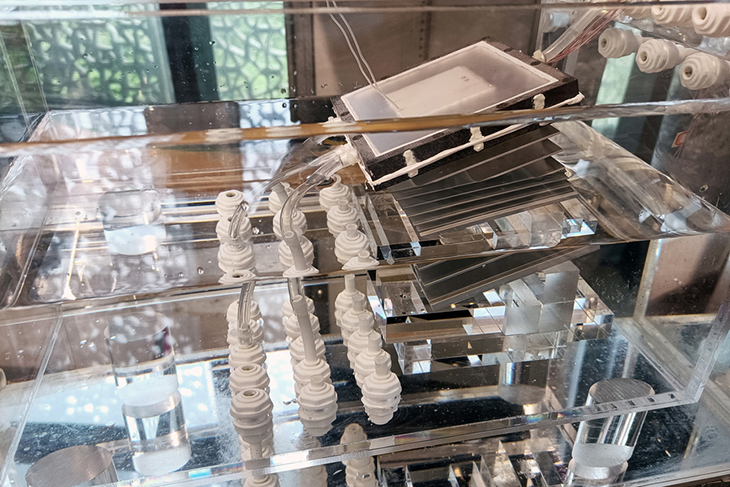
In a groundbreaking achievement rarely witnessed in contemporary times, a collaborative effort between the United States and China has birthed a revolutionary method for purifying seawater. This new passive solar-powered desalination tool heralded as the cheapest and fastest of its kind, has the potential to reshape the landscape of water scarcity solutions.
Capable of producing an impressive 4 – 6 liters of clean water per hour, the prototype of this innovative desalination device has ignited hopes that a scaled-up version could sustain a coastal household throughout the year in sun-drenched climates. This development is particularly timely given the escalating warnings from natural resource managers, city planners, and climate activists about the exacerbation of droughts in the future.
Despite the dire projections, a solution has been within our grasp all along. While only 3% of the Earth’s water is fresh, technological advancements have allowed the human population to burgeon to nearly 8 billion. However, a staggering 68% of the Earth’s surface consists of undrinkable water, constituting a colossal untapped resource.
Recognizing the potential within this vast reservoir, a collaborative team hailing from the Massachusetts Institute of Technology (MIT) and Shanghai Jiao Tong University has developed a desalination still. Remarkably compact, about the size of a briefcase, this device leverages the concept of “thermohaline” circulation, a phenomenon akin to the ocean’s natural processes.
As explained by NASA, thermohaline circulation, also known as the “Great Ocean Conveyor Belt,” transpires when water in polar regions becomes more saline due to a combination of evaporation and sea ice melt. The denser saline water then descends to the polar ocean depths, displacing less saline, colder water towards the tropical oceans. Essentially, it functions as a colossal albeit slow-moving, current compared to the swifter wind-driven counterparts.
In the case of this innovative desalination still, seawater undergoes circulation in swirling eddies. When exposed to sunlight, this circulation facilitates water evaporation, leaving the sale behind. The resulting water vapor is then collected at potable levels of purity. This marriage of technology and natural oceanic processes represents a leap forward in sustainable water purification.
Lenan Zhang, a research scientist in MIT’s Device Research Laboratory, said, “For the first time, it is possible for water, produced by sunlight, to be even cheaper than tap water. This opens up the possibility for solar desalination to address real-world problems.”
The potential implications of this breakthrough are monumental, especially for coastal communities grappling with water scarcity issues and possessing the necessary governmental support and financial resources. The design of all components of the desalination still is geared towards a robust 10-year lifespan, ensuring longevity and reliability in addressing pressing water challenges.
The collaboration between MIT and Shanghai Jiao Tong University has yielded a game-changing solution to water scarcity through an ingenious marriage of solar power and thermohaline circulation. As climate concerns intensify, innovations of this nature serve as beacons of hope, demonstrating humanity’s capacity to devise sustainable solutions that align with the rhythms of the natural world.
What are your thoughts? Please comment below and share this news!
True Activist / Report a typo


